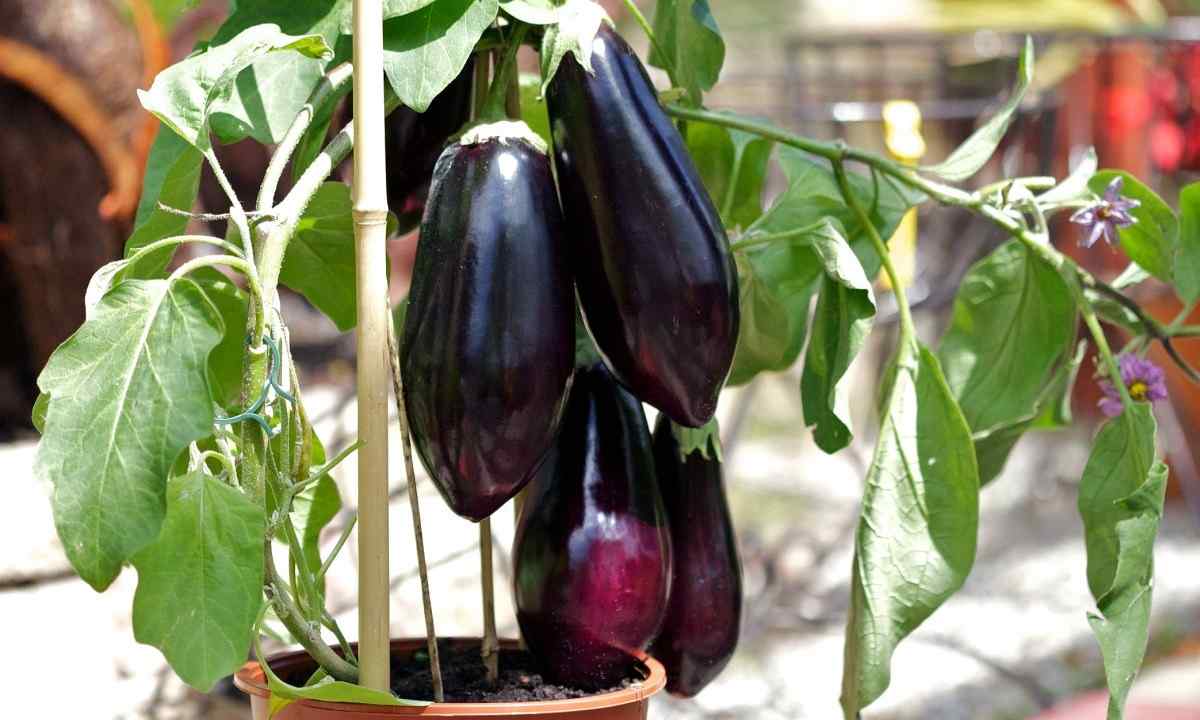The eggplant is thermophilic culture which homeland is India. In Europe it has appeared in the Middle Ages, and in Russia is known since the 12th century. Here vegetable is considered exotic also now, but every year becomes popular more and more.
Eggplants in the south are especially widespread, but with the advent of greenhouses began to cultivate culture also in midland. It is not difficult to grow up plant, but certain skill and knowledge of some features is required.
How to plant seedling
Before planting seedling, it is necessary to prepare soil. The parcel in the greenhouse is dug over, choosing at the same time roots and weeds, and disinfect solution of copper vitriol or spilled boiled water to destroy pathogenic flora. After that the soil is enriched with compost or manure and also nitrogen and phosphoric fertilizers.
Plant seedling to the earth which has got warm up to 15 degrees, observing at the same time distance between bushes in 30-45 cm, and between ranks – 60 cm. Holes should not be too deep and if culture sprouted in peat glass, then it is landed directly in it.
Garter of eggplants
That eggplants in the greenhouse did not adjoin to the earth, did not turn yellow and did not die off - tie up them, also as tomatoes or pepper.
- Over beds with eggplants pull wire and on it fix by the sliding knot kapron rope which length has to be such that it was possible to tie without effort the lower part of stalk of plant.
- At the stalk basis the thread is also fixed by knot and twisted around the main stalk.
- When grow new escapes, too tie up them.
Forming of eggplants
Forming of eggplants consists in timely removal of stepsons, scrap and nipping of plants. It is necessary for observance of optimum air and light conditions and also in order that culture did not spend force for development of excess ovaries.
Are engaged in forming when seedling has already got stronger and has well taken root, but it is not big yet is, approximately, the second week after disembarkation to the greenhouse.
Form eggplants in one or several stalks. The first way is preferable to undersized grades and weak bushes. The second method allows to receive bigger harvest and will help out in case part of seedling has died or it just a little.
Plants form not only in two, but also in three stalks, leaving at the same time the large stepson who was formed when branching one of two bases.
Stepsons delete from bosoms of the lower leaves in due time as they detain moisture in radical zone, thereby increasing risk of development of fungal and viral diseases.
Stepsons delete at initial stage; do it by either hands, or secateurs. Together with side shoots, patients and the deformed leaves remove.
When the plant reaches 30 cm in height, its top is prishchipyvat to stop growth.
Watering
Water eggplants in the first half of day with warm water: otherwise leaves will turn yellow, and growth will be slow. Eggplants not too of vlagolyubiva, but do not suffer drying of the soil.
The first time culture is watered in 4 days after planting of seedling then humidify plant already once a week. And only with the advent of ovaries the eggplants irrigate once in three-four days.
When watering it is necessary to watch that water did not get on leaves – drench only the earth at root.
Weeds from hole in due time remove, and loosen the soil not to allow formation of crust.
Fertilizing of eggplants
It is necessary to feed up eggplants regularly – once in 7-10 days, using at the same time organic and mineral structures. To this culture contraindicated large number of nitrogen fertilizers as they cause excess vegetative growth to the detriment of harvest.
If to observe recommendations about care for eggplants, then during the season it is possible to remove from 15 to 20 ripened fruits from one bush.
